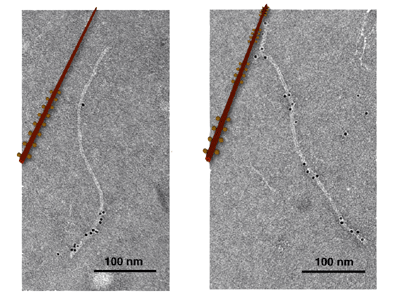DNA Nanocomposites and 3D DNA Origami
Dr. Tim Liedl
Harvard University
The unique properties of DNA- molecular recognition, programable self-assembly, biocompatibility - predestine this molecule as a building block for highly structured materials with specifc nanoscale features. Consequently, DNA-based nanotechnology allows for the massively parallel production of complex nano-devices and structures. Recently, Paul Rothemund introduced the scaffolded DNA origami method where a 7 kb long single strand is arranged into arbitrary two-dimensional shapes with the help of hundreds of 'staple' oligonucleotides (Rothemund, Nature, 2006). We were able to extend the scaffolded DNA origami method to three dimensions by conceptually layering multiple sheets of anti-parallel double helices and carving the desired shape out of this block of DNA. Virtually, every position of a DNA origami structure can be addressed individually, which can be visualized by the directed attachment of gold nanoparticles.


